HOWL’S MOVING CASTLE. Hayao Miyazaki ‘s enchanting anime
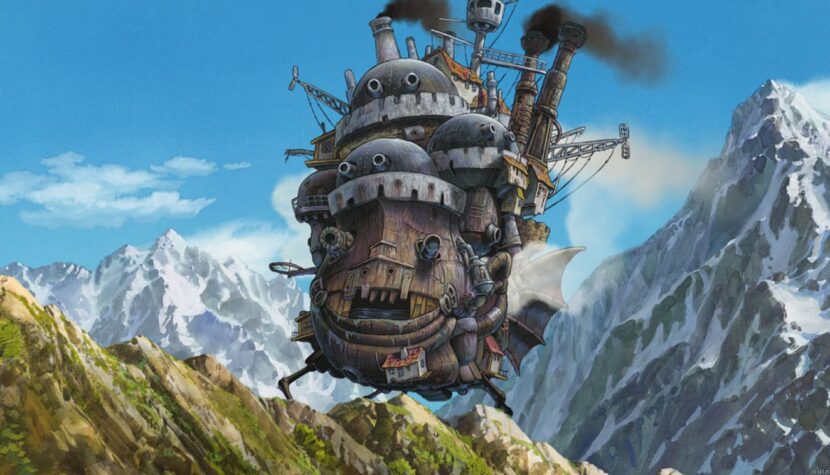
Morning. The wasteland surrounded by thick, gray fog. In the distance, a rumble can be heard, something is approaching. The thunderous sounds grow louder, becoming clearer, the ground trembles. And suddenly, from the fog emerges the Howl’s Moving Castle. It looks somewhat like a dragon, with a fearsome mouth and a massive tongue, as well as a pair of steel wings. It moves on four creaking, metal legs, resembling chicken claws. Every element of this extraordinary contraption is constantly in motion, turning, rotating. Billows of smoke pour out from the gaps between the castle’s parts and the large chimneys. This is how film by Hayao Miyazaki begins – Howl’s Moving Castle (Hauru no ugoku shiro).
Sophie Hatter helps her stepmother run their family hat shop after her father’s death. Working behind the scenes in a small, cluttered room, she observes life passing her by with stoic calmness. Everything changes on the day she accidentally becomes involved in the escape from the Witch of the Waste’s spies and meets Howl, the owner of the Moving Castle. Unfortunately, due to an unfortunate turn of events, Sophie is transformed into an old woman by the cruel Witch, and worse still, she can’t tell anyone about it. Undeterred, she decides to embark on a journey to find a way to break the curse. She ends up at the Howl’s Moving Castle, where she goes unrecognized by Howl and takes a job as a maid. Unexpectedly, she finds herself developing strong feelings for her new employer.
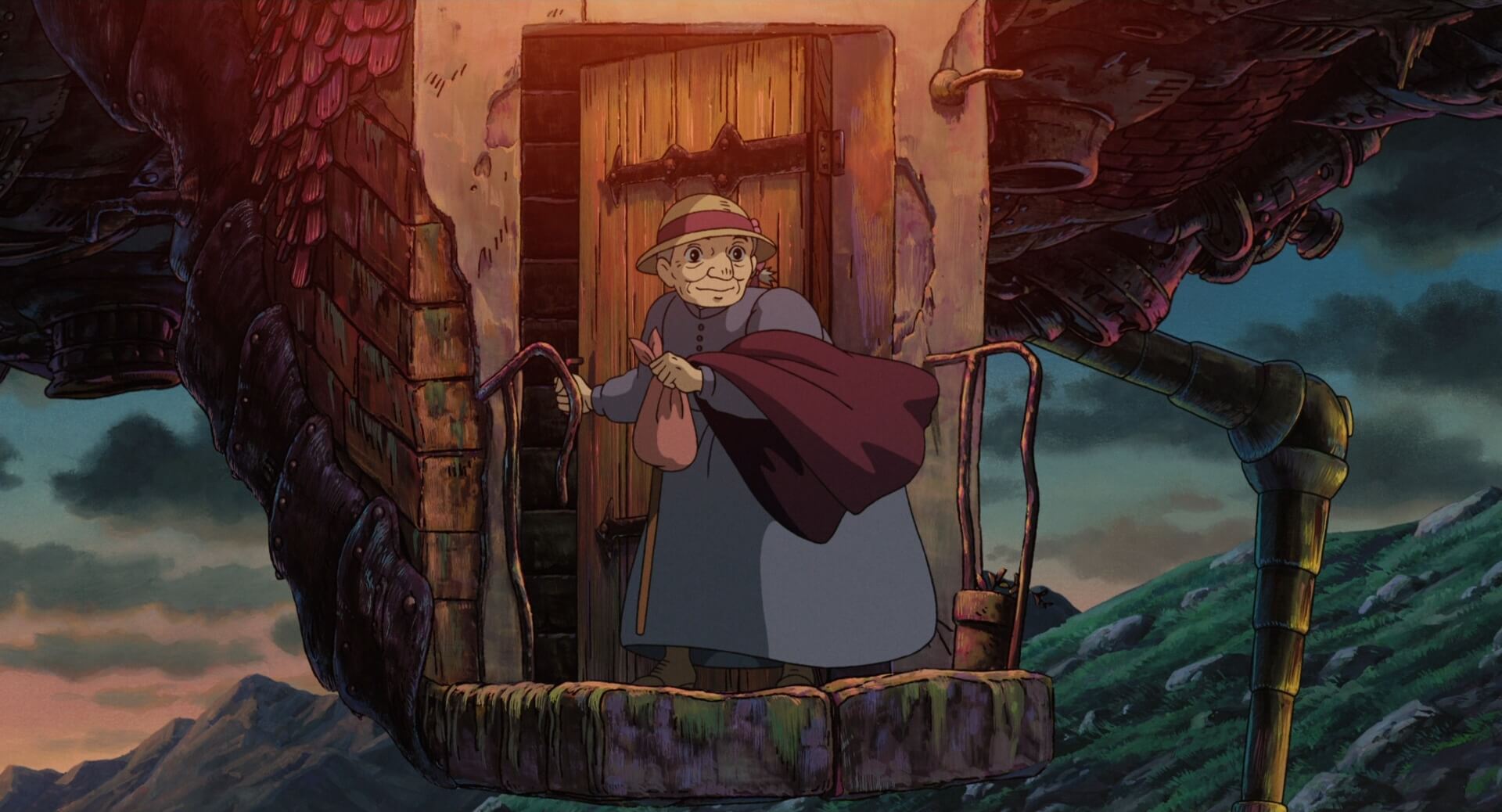
In this extraordinary place, she also encounters a young magician named Markl and Calcifer, the fire demon powering the Castle. Calcifer quickly realizes that Sophie is under a curse and offers to help her if she can find a way to free him from Howl’s control. Meanwhile, war is brewing, and Madame Suliman, from whom Howl once learned magic, wants him to join the fight.
Howl’s Moving Castle is based on the English fantasy novel by Diana Wynne Jones of the same name. Her stories are very unusual, even for the fantasy genre, filled with unique characters and original ideas. Thanks to her great imagination, Ms. Jones managed to create a wonderful world full of magic but also, paradoxically, grappling with real-world problems. Miyazaki, who not only directed but also wrote the screenplay for the film, recognized this and carefully translated the essence of the story to the big screen. He made significant changes to the plot and removed or simplified various subplots, which disappointed both fans of the book and his regular audience (who had set high expectations after the excellent Spirited Away).
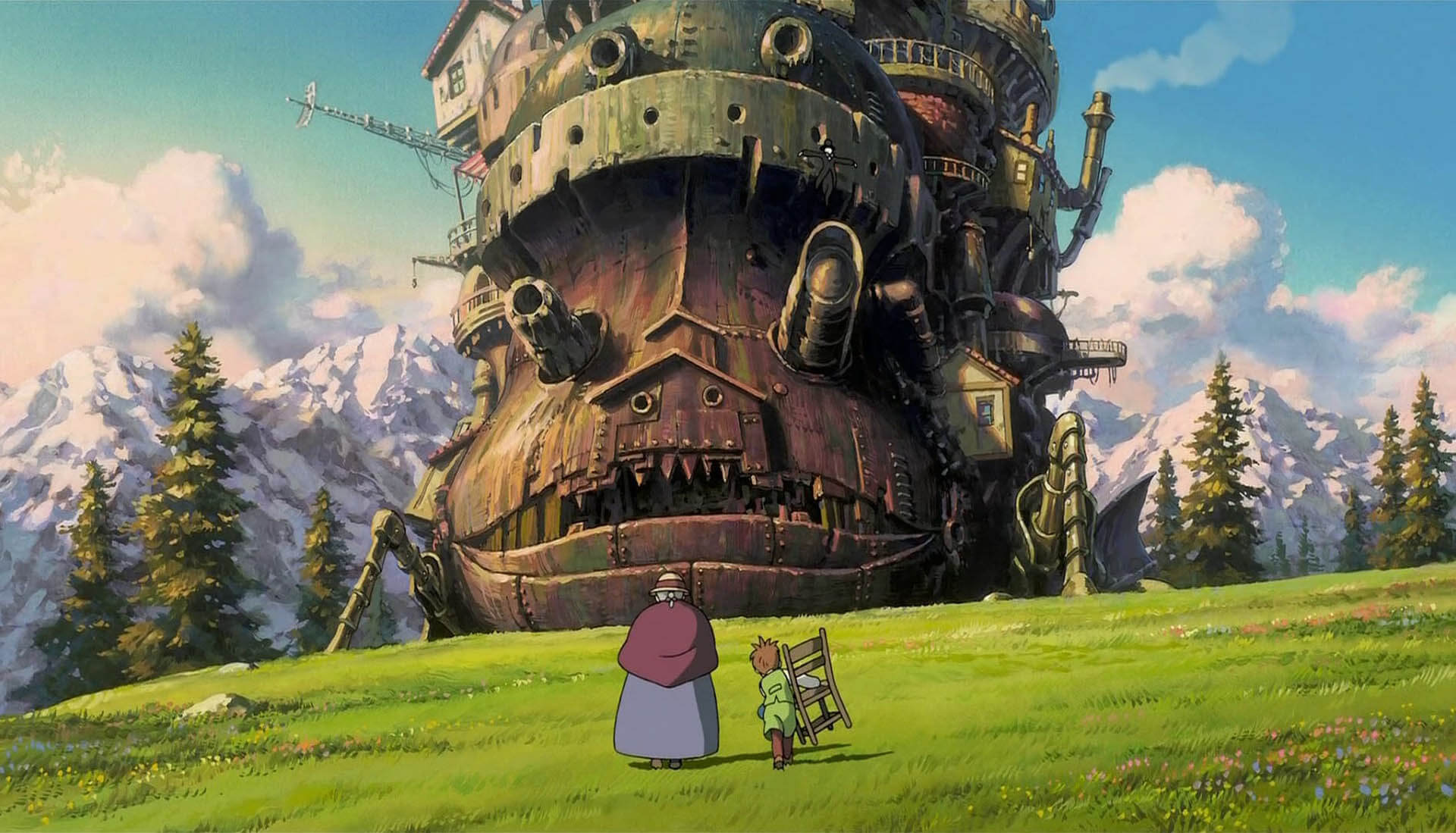
What does this situation result from? The truth is that Howl’s Moving Castle might seem like a chaotic film, full of script gaps, with an ill-conceived and disregarding-the-popular-book storyline. Nothing could be further from the truth! I remember that when I watched Spirited Away, the story in it seemed very unclear at first, but with each subsequent viewing, everything fell into an extraordinary whole. I had a similar impression during this screening, but unfortunately, I didn’t have the opportunity to watch Howl’s Moving Castle again. However, I trust Miyazaki, and I know that this director doesn’t allow for any oversights or inaccuracies, so I have absolutely no reservations about the plot of Howl’s Moving Castle.
The visual aspect of the film is stunning. Beautiful, detailed animation, fantastic color palette, and a highly distinctive style have always been the Studio Ghibli’s greatest strengths. I don’t want to repeat myself because I wrote similarly when discussing Laputa: Castle in the Sky, but I have no choice this time because the people at Ghibli have outdone themselves! From the huge, dynamically moving Howl’s Castle to Sophie’s colorful hometown and the giant airships and vessels gliding through the sky – all of this has been brought to life through traditional animation with minimal computer assistance (whose intervention in the film is absolutely imperceptible). What’s perhaps most important is the diligent work of the entire team of people who truly know how to surprise and delight the audience of Howl’s Moving Castle.
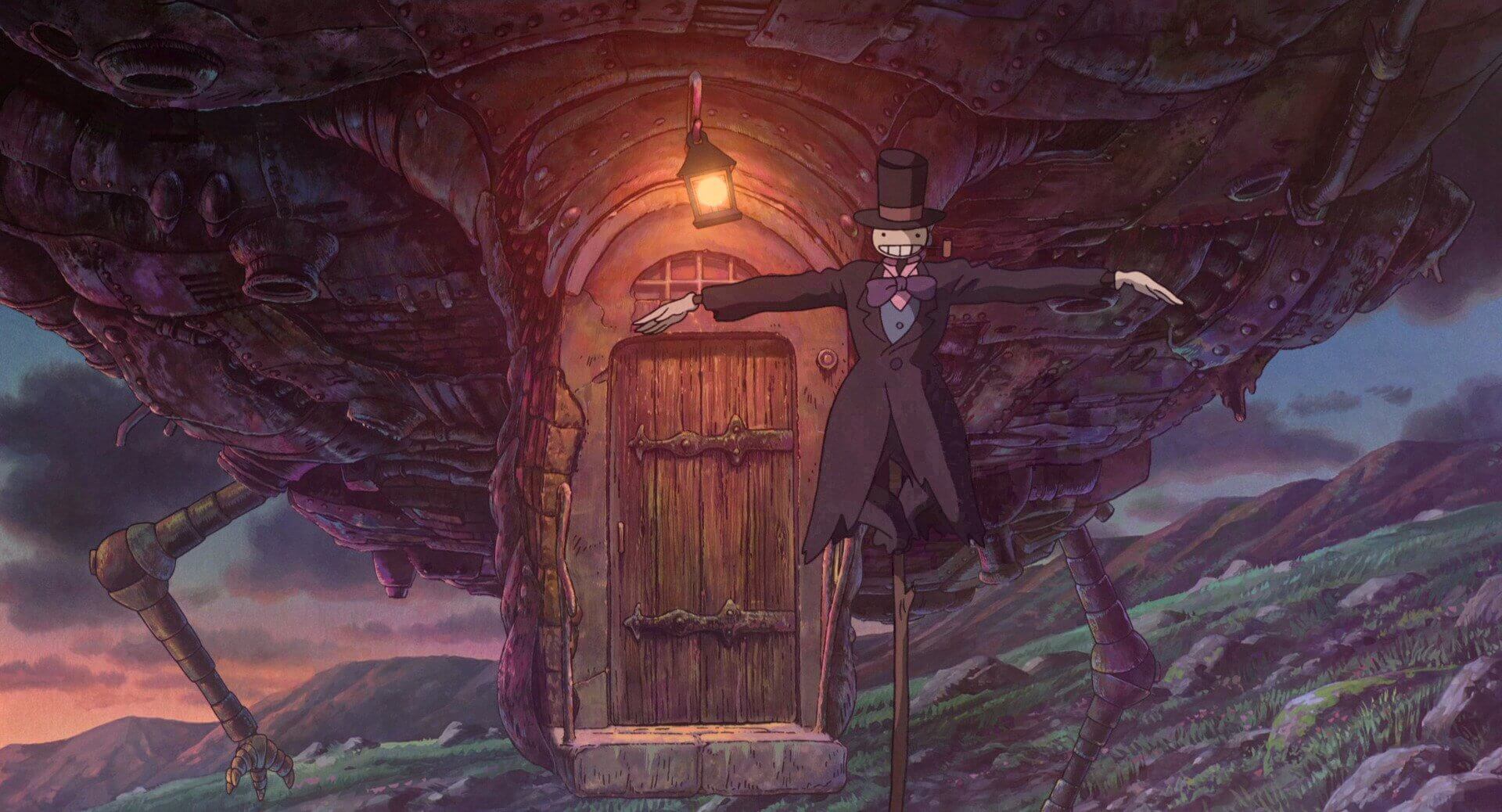
Watching the film in the cinema leaves a colossal impression, and it’s only on such a big screen that you can truly appreciate the tremendous effort put in by the animators. Everything, much like in Howl’s Castle, is in constant motion, which prevents a feeling of static surroundings and instead gives a sense of ever-changing, evolving scenery right before our eyes. This sensation is enhanced by the remarkable attention to small details that the Japanese studio has been known for. The characters, drawn with great care and remarkable delicacy, blend perfectly into this incredibly attractive backdrop. It must be said that one simply cannot take their eyes off this film! Bringing it all together, as always, is Jo Hisaishi, whose music encapsulates the essence of the work.
The story presented in the anime is brimming with extraordinary and endearing characters. Alongside Sophie, who undergoes a fascinating transformation (and it’s not just about magical spells), there’s the intriguing character of Howl himself. Handsome and seemingly self-assured, the wizard turns out to be a terrible egotist and a coward, more concerned with his appearance than the havoc that war brings. In fact, he’s even willing to sacrifice the lives of his friends to avoid facing danger! However, he soon begins an internal struggle, trying to overcome his flaws and weaknesses, and seeks to find the courage within himself. Then there’s Calcifer, the innocently looking demon with immense power. He tries to appear mischievous and stubborn, ignoring everyone, but his efforts are in vain because deep down in his demonic soul, he’s very good, friendly, and amusing. This endears him to the audience from the very beginning.
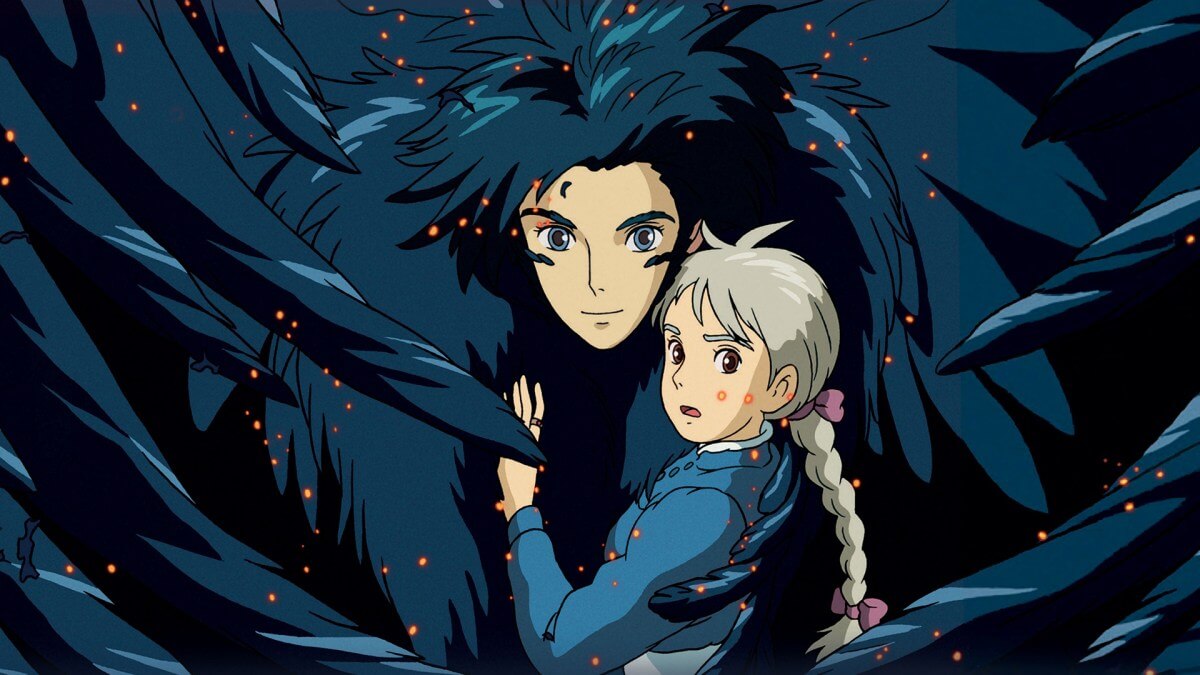
The role of the antagonist falls upon the Witch of the Waste, but as is common in Miyazaki’s films, only initially. A more harmful character to the main protagonists is Madame Suliman, but even she is not truly a negative character. Also intriguing is the scarecrow-like character, affectionately known to the characters as Turnip-Head due to his persistent presence. Always energetic, helpful, attention-grabbing, and with a smile painted on his face, he fits perfectly into this magical world. Little Marco, who dreams of becoming a great wizard, is a very likable character. Although he has ambitious goals and tries to grow up as quickly as possible, he quickly discovers the great importance of family. When he finally experiences the warmth of family bonds, he doesn’t want to lose that wonderful feeling. This extraordinary list is completed by a cute little dog who joins Sophie on her journey to Madame Suliman’s.
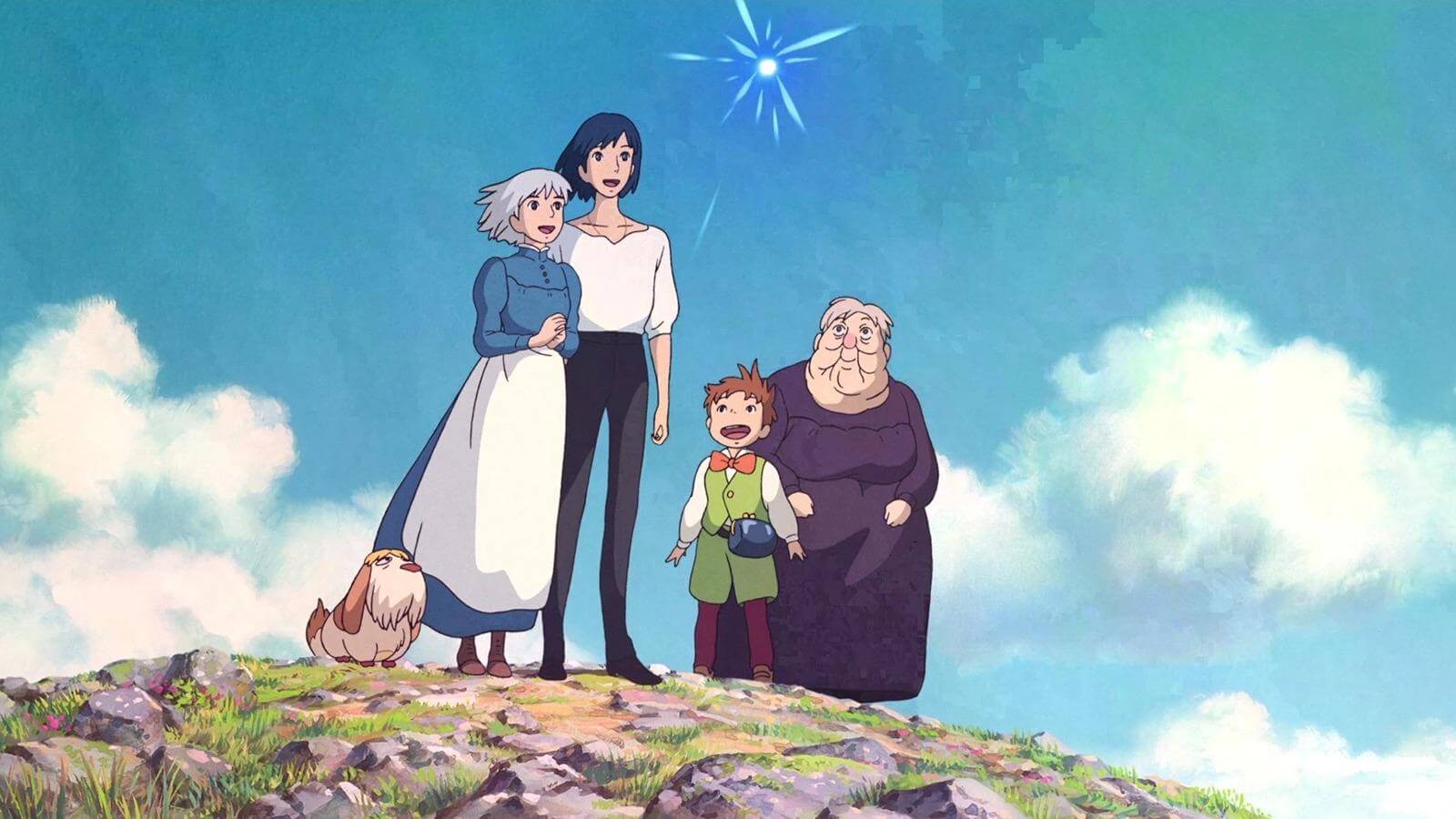
I was also captivated by the creativity and originality with which the creators presented Howl’s magical world. The castle’s doors, for example, are a fantastic invention. They have a special dial on which you can choose one of four colors. Selecting a specific color turns those doors into a passage to one of the nearby realms. This means that the castle can be in four different places at once. It looks absolutely fantastic! Madame Suliman’s magical attack is also spectacular when an entirely new, hostile space literally sprouts in front of the protagonists – a very imaginative and daring vision. The director winks at the audience a few times, especially those who have seen his previous works. Pay attention to details like the incredible flying machines reminiscent of Laputa: Castle in the Sky or Howl’s transformation, which recalls a similar scene in Spirited Away. Howl’s Moving Castle shares a lot with the latter title, but it still maintains its distinctiveness.
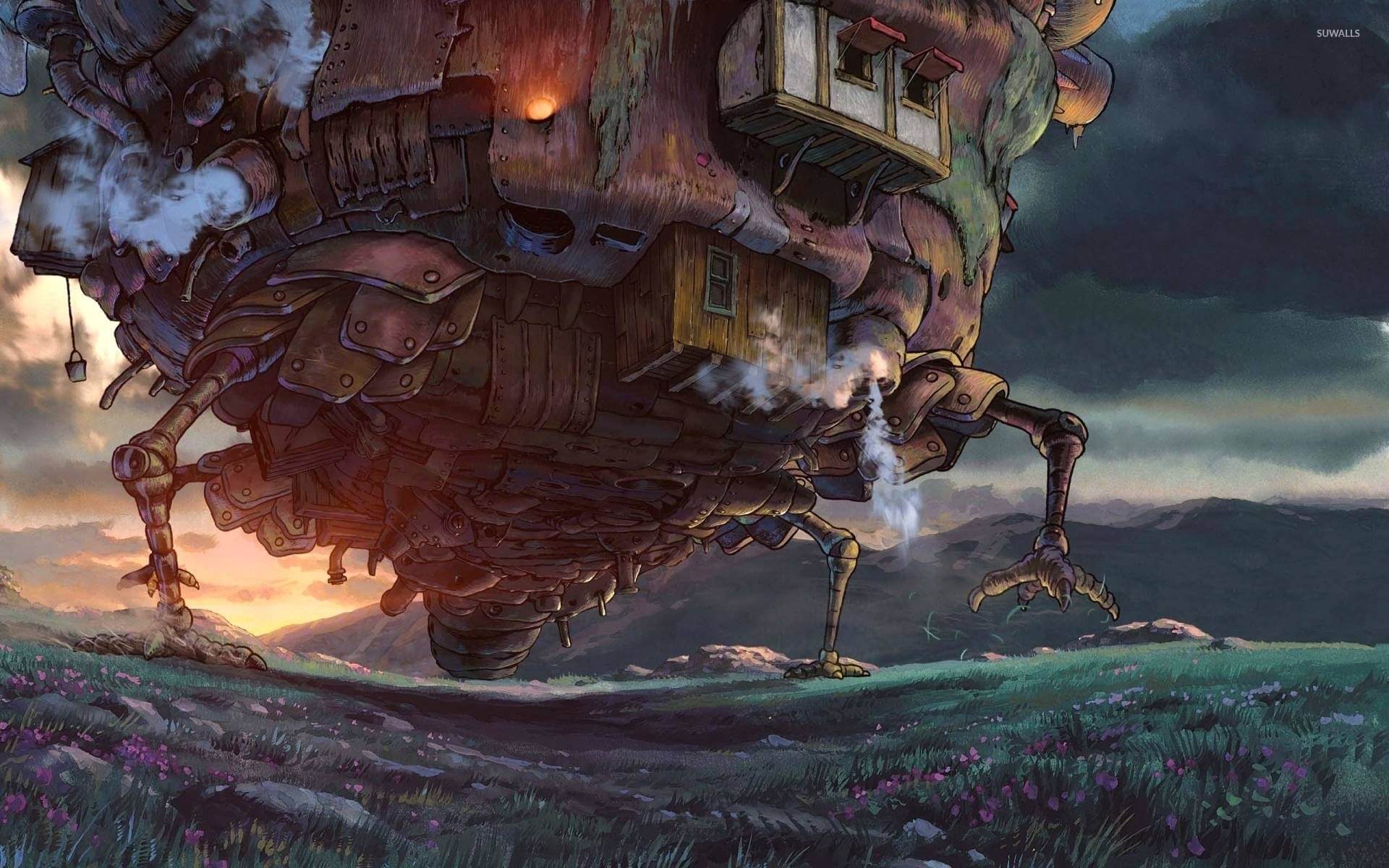
However, Howl’s Moving Castle is not just a wonderful animation with a cast of intriguing characters. It’s also a beautiful love story. Love, the feeling that breaks through all barriers and helps bring about change in our lives, gives the film special value. It makes us feel strong and courageous. When Howl says to Sophie, “I’m going to fight because now I have someone to protect,” his life finally starts to make sense, and he begins to find his life’s purpose. Showing this beautiful and crucial message is, in my opinion, the main goal of the film. There is also a clear anti-war message. The conflict that permeates almost the entire film is never explicitly defined. We see preparations, ships heading towards the enemy, planes filled with ammunition, and armored vehicles. We hear people saying, “We will win this war!” or “Any news from the front?” but we never find out which countries are at war and for what purpose. This particular approach highlights the universality of war, which could just as easily be happening elsewhere and between different nations, inviting viewers to draw their own associations with current events.
And this is where the real issue lies for fans of the book. The truth is that in the novel, the war subplot is entirely inconsequential (from what I’ve read online, there is a war, but it takes place in a neighboring kingdom and is only briefly mentioned). Miyazaki, however, chose to create this aspect anew, raising the bar for himself in the process. Instead of taking the easy route and making a faithful adaptation, he decided to add his own touch, which primarily resulted in a change in the storyline. It is only now that the greatness of the director comes to light as he, against expectations, crafted his own narrative based on Diana Wynne Jones’s stories, without losing any of the freshness and magic of his previous works.

There is also a lot of symbolism and hidden meanings in Sophie’s story, often not easy to discern. The protagonist’s journey is a true quest for her identity and her place in the world. This is frequently emphasized through changes in her appearance – she is an old woman in one scene, looks significantly younger in another, and then reverts to her initial appearance in the next, only to become an old woman again afterward. What matters most are the situations in which Sophie undergoes (unconscious) transformation – this happens when her actions are guided by her emotions, as seen in the scene where she defends Howl against Madame Suliman’s harsh words.
The very idea of the Howl’s Moving Castle itself is thought-provoking. It appears imposing, frightening, and unapproachable from the outside, but inside, it’s an entirely different story… I could expand on these and several other thoughts, but I believe that everyone should seek a deeper meaning in this story on their own. Because it’s not just a “naive fairy tale about being good and wars being bad” (as one American reviewer concluded), but a multifaceted tale with an intriguing and thought-provoking message, as well as an underlying layer that can only be found by a perceptive and understanding viewer.

The screening ends, the audience applauds, and as people leave the theater, some roll their eyes, finding the film strange, convoluted, and incomprehensible, or they mock the subtitles with lines like “I love you, Howl!” Reviewers and internet users collectively agree, saying, “Yes, it’s good, but Spirited Away was better,” or “Visually stunning, but the plot disappoints.” And yet, I still can’t agree with that, and with concern, I read increasingly critical opinions about Miyazaki’s film. Perhaps I should see it again to form a more complete opinion, but one thing I am certain of – I will continue to love it just as much. Because for me, Howl’s Moving Castle is a beautiful, truly moving, and incredibly intelligent work. It’s a true gem among animations and one of the best animated films ever. A real triumph of imagination. The specific magical atmosphere, emotional depth, and subtlety of this wonderful film do not allow me to think otherwise.
Miyazaki’s films should not be compared. They are like the doors in Howl’s Castle – each of his anime leads to a different place, to a separate, magical world. Sometimes similar, sometimes drastically different, but always, ALWAYS, enchanting.

